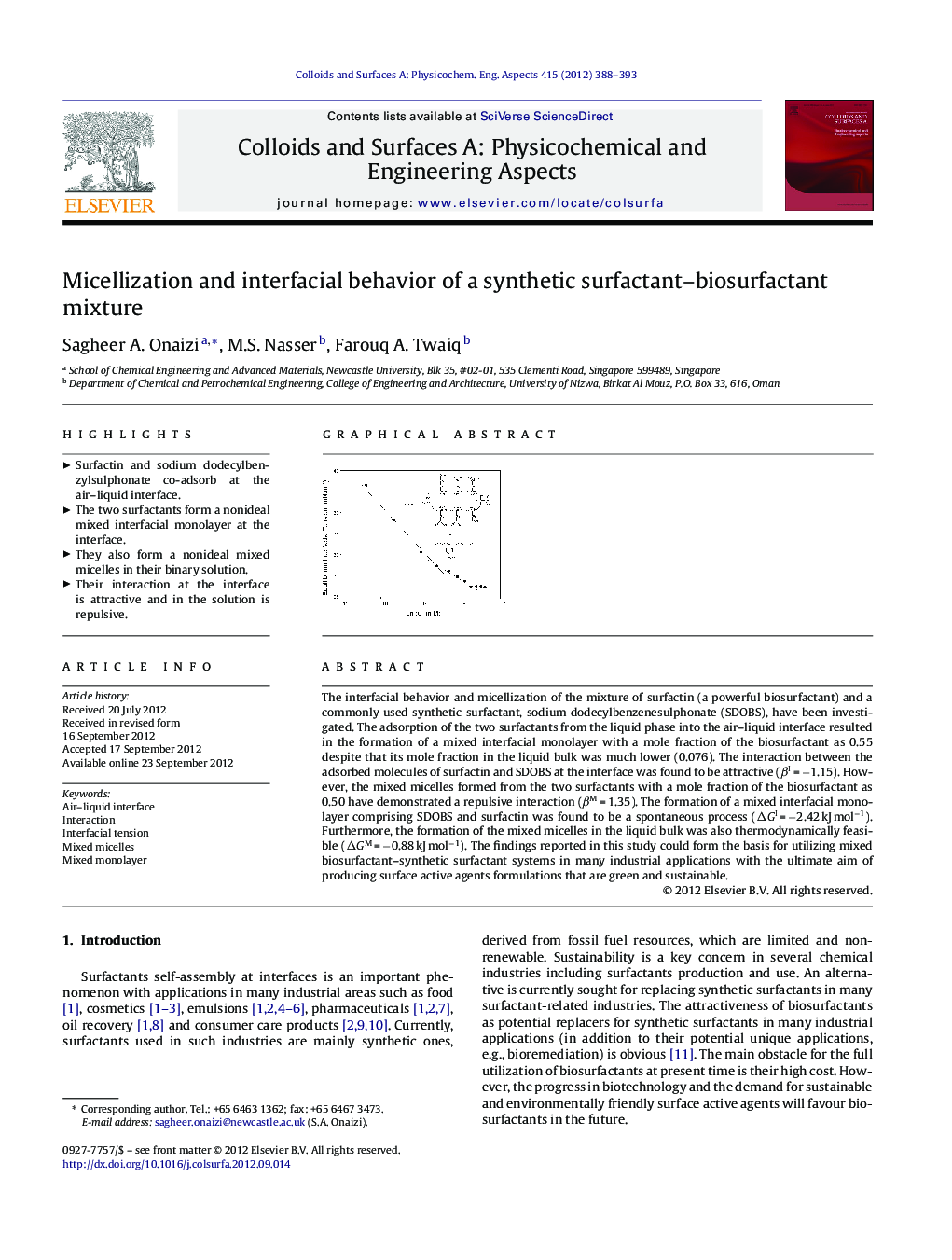| Article ID | Journal | Published Year | Pages | File Type |
|---|---|---|---|---|
| 593916 | Colloids and Surfaces A: Physicochemical and Engineering Aspects | 2012 | 6 Pages |
The interfacial behavior and micellization of the mixture of surfactin (a powerful biosurfactant) and a commonly used synthetic surfactant, sodium dodecylbenzenesulphonate (SDOBS), have been investigated. The adsorption of the two surfactants from the liquid phase into the air–liquid interface resulted in the formation of a mixed interfacial monolayer with a mole fraction of the biosurfactant as 0.55 despite that its mole fraction in the liquid bulk was much lower (0.076). The interaction between the adsorbed molecules of surfactin and SDOBS at the interface was found to be attractive (βI = −1.15). However, the mixed micelles formed from the two surfactants with a mole fraction of the biosurfactant as 0.50 have demonstrated a repulsive interaction (βM = 1.35). The formation of a mixed interfacial monolayer comprising SDOBS and surfactin was found to be a spontaneous process (ΔGI = −2.42 kJ mol−1). Furthermore, the formation of the mixed micelles in the liquid bulk was also thermodynamically feasible (ΔGM = −0.88 kJ mol−1). The findings reported in this study could form the basis for utilizing mixed biosurfactant–synthetic surfactant systems in many industrial applications with the ultimate aim of producing surface active agents formulations that are green and sustainable.
Graphical abstractFigure optionsDownload full-size imageDownload as PowerPoint slideHighlights► Surfactin and sodium dodecylbenzylsulphonate co-adsorb at the air–liquid interface. ► The two surfactants form a nonideal mixed interfacial monolayer at the interface. ► They also form a nonideal mixed micelles in their binary solution. ► Their interaction at the interface is attractive and in the solution is repulsive.
